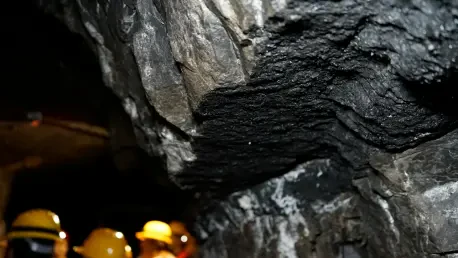The mining industry stands on the cusp of a new era, marked by significant innovations in safety and operational efficiency. As technology surges forward, the integration of Proximity Detection Systems (PDS) into mining operations is transforming how mines function, with implications far beyond simple proximity alerts. The systems are now a vital component in the development of automated machinery and autonomous vehicle technology. Driven by advancements in software, artificial intelligence, and data processing capabilities, mines across the globe are embarking on a journey toward increased safety and efficiency. These advancements highlight the critical role that PDS plays in the modernization of mining and the broader trend toward automated and data-driven processes.
Integration of Multi-Sensing Technologies
Enhanced Sensing Capabilities
The integration of diverse sensing technologies within PDS marks a major leap forward in the mining sector. Combining multiple sensors into one cohesive system allows for enhanced accuracy and functionality. As AI and robust software solutions become more sophisticated, these systems can now interpret complex data quickly and effectively, ensuring that all potential hazards are detected well in advance. This comprehensive detection capability goes beyond simply alerting nearby obstacles; it provides a layered approach to safety by anticipating and mitigating risks in real-time. The ability to process and analyze data from multiple inputs signifies a turning point where PDS not only enhances safety but also contributes to greater operational efficiency.
The need for this advanced technology is evident as the mining industry becomes increasingly complex and competitive. Mines are tasked with producing more while ensuring no compromise on safety standards. PDS, equipped with cutting-edge sensing technologies, is responding to this demand by offering an unparalleled level of assurance. These systems are designed to adapt to various environments and machinery types, ensuring flexibility and reliability in diverse mining conditions. The integration challenges have been addressed by developing intelligent algorithms capable of learning and improving over time, thus refining the overall effectiveness of safety protocols.
Automation and Processing Power
PDS has become a cornerstone technology for enabling automation in mining, particularly for trackless mobile machines. The enhanced processing power of these systems allows them to support automation by providing the necessary data to inform and guide autonomous systems safely and efficiently. This development not only aids in reducing human error but also enhances productivity by allowing operations to continue with minimal manual intervention. Sensor data integration into the central processing system provides real-time insights, which are critical for making informed decisions regarding equipment operation and site management. The support for automation demonstrates how PDS is not merely a safety feature but a comprehensive system driving operational optimization.
Autonomous vehicles within mines rely on the assurance that PDS can accurately detect and respond to environmental changes, supporting “Zero Harm” initiatives. As a result, PDS creates a safer working environment where the risk of accidents is significantly diminished. The synergy of multi-sensory data not only boosts immediate safety protocols but fosters long-term strategic planning by building comprehensive safety records and trend analysis. These contributions position PDS as a pivotal player in shaping the future of mine automation, efficiency, and safety, demonstrating a commitment to transforming mining operations through innovative technology solutions.
Collaboration for Safety and Standards
Stakeholder Involvement
The evolving role of PDS in mining safety is further complemented by collaborative efforts among stakeholders, including mining companies, Original Equipment Manufacturers (OEMs), and technology innovators. Stakeholders are working together to establish specific PDS requirements that align with industry safety standards and regulatory compliance. The focus is on fostering an environment where safety technology can thrive through shared insights and innovations. The cooperation and dialogue between different parties encourage the development of technologies that address the unique safety challenges mines face, thereby enhancing overall industry standards and ensuring that safety remains at the forefront of mining operations.
These collaborative efforts result in a unified approach to mining safety that leverages collective expertise and resources. By addressing the various hurdles that PDS implementation may pose, stakeholders can ensure seamless integration into existing and future mining operations. This synergy not only propels innovation but also ensures that best practices are identified, shared, and adopted throughout the industry. The realization of this collaborative potential provides a pathway toward a safer and more productive future for the mining sector, driven by cutting-edge PDS technology.
Data Utilization and Safety Improvement
Data is now recognized as an invaluable asset in enhancing mining safety and operational effectiveness. PDS technologies are instrumental in collecting and analyzing a wealth of data that informs safety measures and operational strategies. This data-driven approach enables real-time monitoring of safety conditions and supports the identification of high-risk areas. By providing actionable insights, PDS not only improves safety protocols but also enhances operator behavior through targeted training and performance assessments. As operators become more informed and aware, overall mine productivity is substantially increased.
The continuous collection and analysis of safety data empower mines to proactively identify potential hazards before they can cause harm. This preventative strategy embodies the “Zero Harm” philosophy, promoting a culture where safety is prioritized without sacrificing efficiency. As data systems become more advanced, the potential to refine operations based on data insights promises a future where mining is both safer and more productive. With the integration of PDS systems, a new standard of excellence in mining safety and productivity is within reach, heralding an era where data-driven decisions lead to successful outcomes.
Unveiling Future Possibilities
The mining industry stands poised on the brink of significant transformation, fueled by remarkable advancements in safety and operational efficiency. The integration of Proximity Detection Systems (PDS) into mining operations is reshaping the sector, going beyond merely alerting workers about nearby hazards. These systems are now pivotal in the development of automated equipment and autonomous vehicle technology, crucial for modern mining practices. Propelled by breakthroughs in software technology, artificial intelligence, and enhanced data processing, mines worldwide are journeying toward heightened safety standards and improved efficiency. Such developments underscore the essential role of PDS in modernizing mining operations, as they are part of a broader trend favoring automation and data-intensive processes. As the industry adopts these innovations, the potential for increased productivity and worker safety has never been greater, heralding a new chapter in mining’s evolution.









